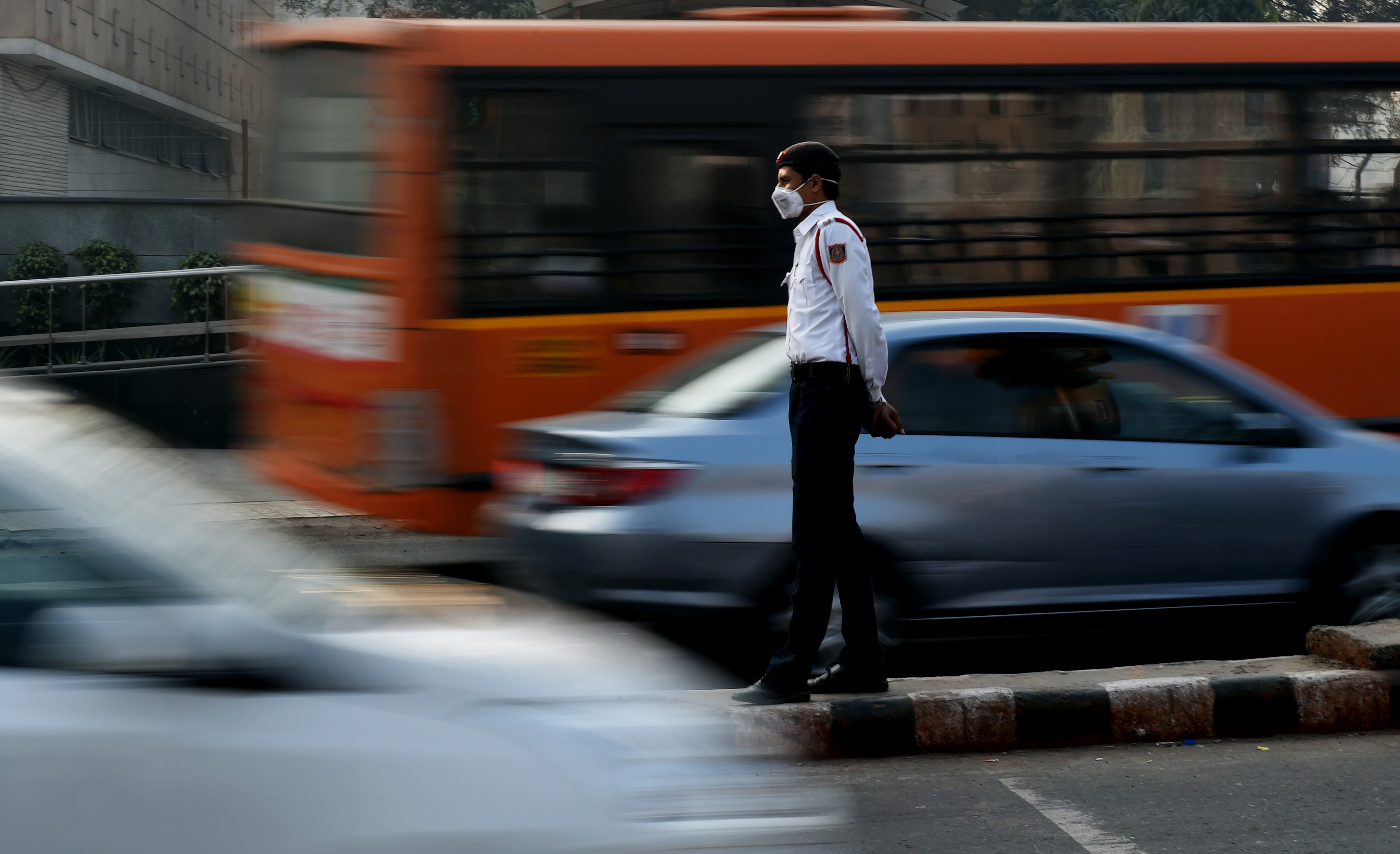Spikes on speed breakers are the latest innovation tried by Noida Police to curb traffic violations. Drastic measures are needed in Delhi too, where drivers behave as if rules are meant to be broken
January 8: To prevent driving on the wrong side which leads to major accidents, tyre killers (speed breakers with spikes) were installed at the main crossing of Noida’s Sector 77. So that those disobeying traffic rules would find their tyres automatically damaged.
January 9: These tyre killers got uprooted from the spot within 24 hours of their installation when trucks drove over them, and vehicles resumed plying from the wrong side. Cyclists and motorcyclists learnt to aim for the space between two spikes, which was wide enough for their tyres to roll through unscathed.
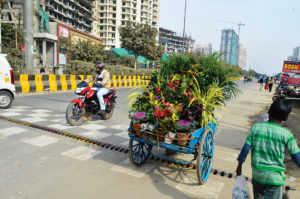
Patriot visited the site of the tyre killers on January 15, and found that they had been repaired, but numerous two and three wheelers were still resorting to driving on the wrong side in spite of the tyre killers and the numerous banners which warns drivers of these machines. This is because they drive through the gap between spikes.
Devender, the caretaker appointed by the Noida Authority to look after the tyre killers, says that two- and three-wheelers are the real menace as they have discovered a way to avoid the tyre killers. However, the entire exercise has not been a failure as four-wheelers and heavy vehicles have been compelled to stop plying on the wrong side.

When asked why he was not utilising the next cut to take a U-turn and was resorting to driving on the wrong side, a biker reasoned, “My home is right here, in another 400 metres. However, the next turn is some 3 km away. So if I go this way it saves time.”
In the time that Patriot was present, at least six motorcycles, three autos and 10 cycles used the road. Many four-wheelers started down the wrong side but stopped after seeing the tyre killers.
Naveen Sharma, engineer at the Noida Authority, who is in charge of this project says, “We have to keep a minimum distance between the two spikes in the tyre killer, otherwise it will cause damage to the vehicles coming from the right direction. We installed them to instill fear among the people who took the wrong side, an offence that can lead to fatal accidents if two vehicles travelling in the opposite directions collide. But people find ways to avert that as well”, says a visibly dejected Sharma.
The bigger picture
In 2018, 74,510 challans were issued in Noida for vehicles driving on the wrong side, a number which is quite large. This is the main reason why the Noida Traffic Police and the Noida Authority joined forces to install these tyre killers near Supertech Capetown. They plan to install more such tyre killers in various parts of Noida this year itself.
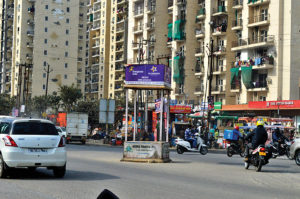
“On the road from Gaur City to Ghaziabad, we used to challan 4,000 cars a month, even four months back, for wrong side driving. But now we have blocked all the cuts, and the problem has reduced quite a bit”, says Anil Kumar Jha, Additional Superintendent of Police (Traffic) of the Noida Police.
However, in spite of safety measures taken by the authorities, violation of traffic rules continues unabated. In fact, there have been six lakh challans cut by the Noida Police in the year 2018, according to data shared by them. This happens in a city where the vehicle population is 6.5 lakh and the population is 14 lakhs.
“Breaking traffic rules is a major behavioural problem among the citizens”, says Jha. “People want to avail shortcuts, they want to get to their destination on time. That is why they take shortcuts, they drive on the wrong side, drive through red traffic signals. It is the tendency of people to break the basic traffic rules for individual gain,” he adds.
It is also the lack of police to enforce the rules that leads to rampant traffic violations in Noida, says Jha. “We have around 153 traffic officials in Noida, which amounts to one personnel for every 25,000 people in Noida. Out of that 53 have been posted on the roads for manning traffic”, he adds.
“At this point of time, the number of police on the streets is even lesser. Twenty-six of those 53 have been posted at the Kumbh Mela and 22 have been sent for the Republic Day Parade, which means that we are left with just five policemen on the streets. We are seriously short-staffed right now, and that is why we can’t man key areas in the city”, says Jha, adding that the district magistrate’s office has employed some force to help the Noida police during this time.
Another reason for such reckless driving, Jha feels, is that the population of Noida mostly comprises of people who are not that well educated. “70% of the residents of Noida are people living in slums and urban villages, and that is why I feel traffic rules are broken so often.
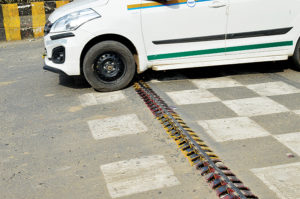
In the past year, there were 6,274 accidents pertaining to traffic rule violation out of which 1,562 proved to be fatal. “This number is by no means low, and if people are not aware enough, the toll will continue to increase over the years”, concludes the police official.
Chandigarh, the model city
While people continue to break traffic rules in Delhi, and the amount of challans increase by the day, Chandigarh, which is not that far away from the Capital, continues to shine in terms of their traffic management. In the past year, only 97 accidents have happened in the Union Territory, as compared to 6,274 in Delhi. So what makes The City Beautiful the best in terms of traffic management in the country? Patriot talks to Deputy Superintendant of Police (Traffic) of Chandigarh Police, Jaswinder Singh to find out why.
Planned roads
The roads in Chandigarh are the most planned in the country. So in each sector the roads are an 850-metre stretch until the first cut appears, and the second one appears after 1.2 km. There are no random cuts here and there from where cars can slip into the wrong side.
Again, there is only one point in the entire sector which connects the sector road to the main road, and also at the end of the road of each sector there are circular points, ahead of which are the main roads.
At every cut and circle there are policemen manning the area, making sure that people just don’t get into the cuts and drive on the wrong side.
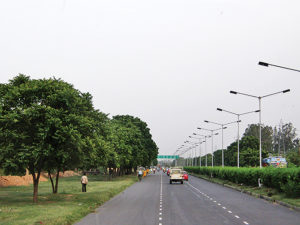
On all the roads, permissible speed limits have been decided, above which the driver cannot go. There are sensors on the road which can clock if one is going even slightly above the permissible speed limits. These sensors send a signal directly to the police and the car is automatically challanned.
Again, there are two clearly demarcated lanes in Chandigarh — one is meant only for two- wheelers, and the other for all other vehicles. What this does, is separate the two and hence lessen the risk of the collision of a two-wheeler and a four-wheeler. If a two-wheeler cuts into the four-wheeler lane and vice versa, such a violation will be punished.
Strict vigilance
As if this wasn’t enough, city police conduct thorough and proper researches every year to identify the areas with most traffic as well as accident-prone areas. This network is created through several cameras, sensors on the road, and reports of traffic violations and accidents. The police have identified 36 such spots across the city, and have placed more policemen than in other areas to monitor those particular areas.
Again, the volume of traffic comes a lot from areas bordering Chandigarh and other neighbouring cities like Panchkula and Mohali. In addition to the 10 lakh cars that ply on the city roads every day, there are around one lakh cars coming from outside. So, huge number of police are stationed at these points, so that riders from other cities coming into Chandigarh do not break traffic rules.
In addition to this, the police have also identified hotspots where offences like drunken driving and overspeeding are most prevalent. At these points, they conduct checks once every three days. In addition to the traffic police already posted there, they have placed additional motorcycles and jeeps that wait away from the public eye to catch any traffic offenders.
Public awareness
The Chandigarh police conduct regular programmes at schools and colleges to spread traffic awareness. This is done especially in primary schools, where from time to time the children are taught about traffic norms in a special class.
In addition to this, ‘mohalla drives’ i.e public awareness campaigns in each sector are held by traffic police officials once a week to spread awareness among the public.
In addition to all this, the police appoints traffic marshalls. These marshalls are drawn from all walks of life – from retired army officers to businessmen to housewives — and they act as an interface between the common man and the police. Not only do they act as sources of information for the police, but they also partake in making the public aware of the hazards of traffic. DGP Singh says that such people fan out to spread awareness, it has more impact than police intervention. Currently, there are 100 such taffic marshalls in Chandigarh.
Traffic Violation hotspots
in Noida
1) Atta Market
2) Botanical Gardens
3) DSC Road Bhangel
4) Mamoora- Model Town Road
Traffic violation hotspots in Delhi
1) Connaught Place
2) Saket
3) Hauz Khas
4) Vasant Kunj

